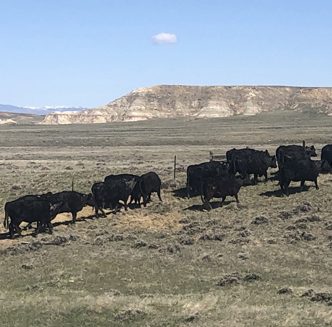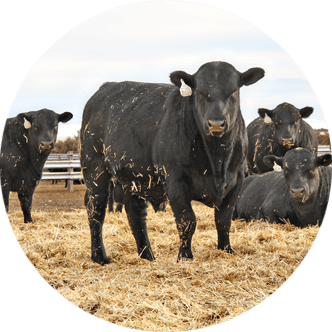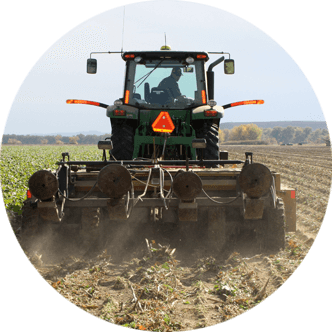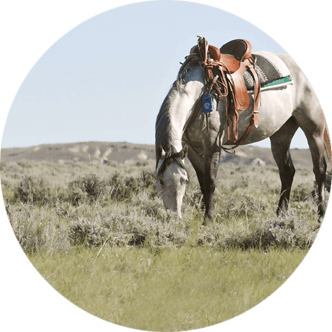CattleFax forecasts continued strong demand and high price outlook for cattle producers
The popular CattleFax Outlook Seminar, held as part of CattleCon 2025 in San Antonio, shared expert market and weather analysis.
The U.S. beef industry is poised for another year of strong market performance, driven by tight cattle supplies and robust consumer demand. As the beef cow herd enters a stabilization phase following years of contraction, the resulting supply constraints have shifted market leverage decisively in favor of cattle producers.
Weather forecast
Weather conditions will remain a critical factor influencing grazing availability, herd expansion and cattle prices.
Meteorologist Matt Makens said, this winter, La Niña has brought rather volatile weather changes across North America, with the majority of weather extremes affecting those in the central and eastern U.S.
For Mexico and the southwestern U.S., producers will see drought acreage increase as it has nationwide since June.
“Drought will likely increase across the Western U.S. this spring and into the Pacific Northwest, Northern Plains and Canadian Prairies through this summer. To watch will be the North American monsoon and how much drought relief it can provide to Mexico, the Southwest and parts of the Plains,” he said.
“Current data shows the monsoon is likely to produce more moisture this year than last. A strong enough monsoon can decrease precipitation across the central Corn Belt, so watch July closely. Late in the year, the focus turns to the development of La Niña or El Niño,” Makens adds.
Economic outlook
Shifting the discussion to an outlook on the economy, energy and feed grains, Troy Bockelmann, CattleFax director of protein and grain analysis, noted inflation eased in 2024, ending the year at 2.9 percent, a significant drop from the nine percent peak in 2022 but still above the Federal Reserve’s two percent target.
To address this, the Federal Reserve cut interest rates three times in the latter half of the year, bringing the Prime bank loan rate to 7.5 percent.
The labor market remained strong, with unemployment briefly rising midyear before falling to 4.1 percent as job creation outpaced expectations. Combined with solid consumer spending and wage growth, the U.S. economy is expected to see healthy gross domestic product growth of two to 2.5 percent in 2025.
“The Federal Reserve’s rate cuts helped stabilize inflation and support economic growth, but we’re still above target,” Bockelmann said. “Despite economic headwinds, consumer confidence and spending have remained resilient. However, lingering inflation and potential trade uncertainties may limit the extent of further interest rate cuts this year, and inflation remains a key factor to watch in 2025.”
CattleFax shared national Dec. 1, 2024 on-farm hay stocks were up 6.3 percent from a year-ago at 81.5 million tons, with hay prices averaging $175 per ton in 2024. Corn stocks-to-use at just over 10 percent should support the spot market towards five dollars per bushel with a yearly average spot future price of $4.40 per bushel expected.
“An increase in corn supply for the new crop year is expected as smaller beginning stocks are offset by larger production levels due to corn regaining acres from soybeans. Stocks-to-use have the potential to be above 13 percent, which implies a price range of $3.75 to $5.15 per bushel for the 2025 market year,” Bockelmann said. “There is a strong correlation between corn stocks-to-use and hay, and we expect hay prices to follow corn and trend a bit higher in the coming year.”
On the energy front, he noted, not much will change for 2025. Average crude oil prices are expected to be near steady with 2024, though risk remains for a reduced U.S. market share of global product due to potential trade policy impacts. He also expects ethanol production to continue to stay strong.
Market predictions
Kevin Good, vice president of market analysis at CattleFax, reported the U.S. beef cow herd is expected to see the cycle low to start 2025 at 28 million head, 150,000 head below last year and 3.5 million head from the 2019 cycle highs.
“We expect cow and bull slaughter to continue declining in 2025, with overall numbers down by about 300,000 head to 5.9 million head total. Feeder cattle and calf supplies outside of feedyards will also shrink by roughly 150,000 head, while cattle on feed inventories are starting the year slightly below 2024 levels at 11.9 million head,” he said.
“With a tighter feeder cattle supply, placement pace will be more constrained, leading to a projected 700,000-head drop in commercial fed slaughter to 24.9 million. After modest growth in 2024, beef production is expected to decline by about 600 million pounds to 26.3 billion in 2025, ultimately reducing net beef supply per person by 0.8 pounds,” added Good.
Beef prices continued their upward trend in 2024, averaging $8.01 per pound – the second-highest demand level in history.
While demand may ease slightly in 2025, retail prices are still expected to rise to an average of $8.25 per pound. Wholesale prices will follow suit, with the cutout price projected to reach $320 per hundredweight (cwt).
“Retail and wholesale margins are historically thin, making strong consumer demand essential to maintaining higher price levels,” said Good. “While opportunities for further leverage gains are limited, the market remains favorable for producers.”
Inflation remained moderate in 2024, but high consumer debt, elevated interest rates and competition from more affordable protein options could impact purchasing decisions. However, foodservice demand showed resilience, ending the year stronger as same-store sales and customer traffic improved.
“Despite economic pressures, consumers continue to pay premiums for higher-quality beef,” Good added. “Choice grade or better remains in high demand, reinforcing the strength of the premium beef market.”
Turning to global protein demand, Good noted the outlook for animal proteins remains strong, although U.S. beef exports are projected to decline by five percent in 2025 due to reduced production and higher prices. Conversely, U.S. beef imports are expected to grow as lean beef supplies tighten.
“The global outlook is currently an interesting scenario as trade policy developments, including potential tariffs, could pose risks to international markets. While growth is expected this year, it may be limited to global competition supply constraints and an uncertain tariff environment,” Good said.
Mike Murphy, CattleFax chief operating officer, forecasted the average 2025 fed steer price at $198 per cwt, up $12 per cwt from 2024. All cattle classes are expected to trade higher, and prices are expected to continue to trend upward. The 800-pound steer price is expected to average $270 per cwt, and the 550-pound steer price is expected to average $340 per cwt. Utility cows are expected to average $140 per cwt, with bred cows at an average of $3,200 per cwt.
“While the cyclical upswing in cattle prices is expected to persist, the industry must prepare for market volatility and potential risks. Producers are encouraged to adopt risk management strategies and closely monitor developments in trade policy, drought conditions and consumer demand,” Murphy said.
The 2025 U.S. Department of Agriculture’s all-fresh retail beef prices are expected to average $8.25 per pound, which will continue the balancing act for retail between high prices and reduced supply. Murphy noted the key is to avoid setting prices too high, especially in light of competition from more affordable proteins.
Overall optimism
Randy Blach, CattleFax chief executive officer, concluded the session with an overall positive outlook and noted strong margins in the cow/calf sector have set the stage for cow herd expansion to begin, with heifer retention likely back near a more normal pace, relative to minimal retention in recent years.
Drought and pasture conditions are now the key factors influencing the rate of expansion with a slower herd rebuild anticipated compared to the last cycle. This more measured expansion pace implies a positive outlook for producer returns over the next several years.
Strong consumer demand also remains a bright spot for the industry.
“We have to remember where we came from,” Blach said. “Continued improvements in quality and meeting consumer expectations with a safe, nutritious product and a consistently good eating experience have had tremendous impacts on moving the needle for this industry. We’re moving in the right direction, and we need to keep paying attention to that signal.”
The National Cattlemen’s Beef Association (NCBA) has represented America’s cattle producers since 1898, preserving the heritage and strength of the industry through education and public policy. As the largest association of cattle producers, NCBA works to create new markets and increase demand for beef. For more information, visit ncba.org.





